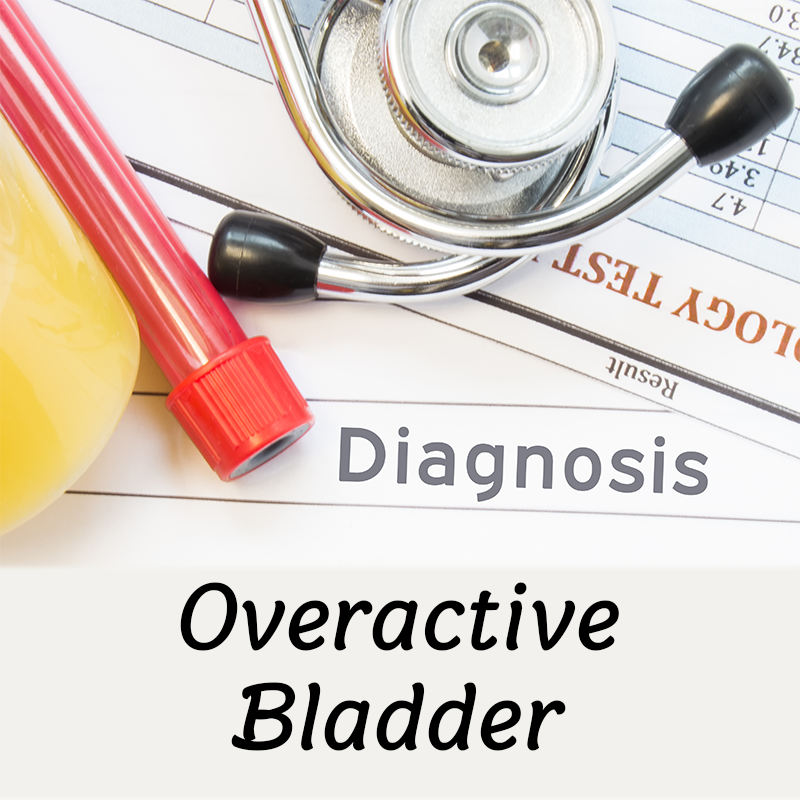
Overactive bladder syndrome, also referred to as OAB, is an uncontrollable need to urinate, often at the worst possible times.
For most of us, when the bladder fills to about half its capacity, the urge to void is triggered. Much like a snooze button on an alarm clock that lets us sleep awhile longer, we can hold off until we’re closer to a bathroom, or the timing is more convenient.
Not so for OAB sufferers. Their urgency is more like the constant demand of a malfunctioning alarm clock without that button — intense, shrill and non-stop until it’s turned off. OAB sufferers feel more like their bladders are overflowing. They don’t have the luxury of waiting, needing relief immediately. If they’re unable to void right away, leakage may occur.
OAB is unbiased. Whether you’re at work or play, it disrupts concentration, performance and pleasure, negatively impacting your life. In time, those afflicted with OAB may become depressed, withdrawing socially.
What Causes Overactive Bladder?
No one really knows, but it’s believed that involuntary contractions of the detrusor muscle in the bladder transmits false messages to the brain.
Symptoms
- A sudden, inconvenient urgency to urinate that is difficult to control: Just as your child is about to blow out those birthday candles or receive that diploma, you suddenly you have to run, not walk, to the nearest toilet.
- Frequent urination (more than 8 times daily): Your bladder seems to control your life. You need to know where every bathroom is located when you go out. Maybe you even carry a change of clothing, “just in case”.
- Voiding two or more times nightly, disrupting sleep (nocturia): You awaken during a delectable dream or restful sleep more than once to urinate.
- Involuntary, uncontrolled leakage (see also urge incontinence): You can usually hold it in, but just barely, and sometimes experience embarrassing drips.
Contributing factors:
- Overweight or obesity
- Stress
- Drinking large amounts of caffeine, alcohol and other liquids
- Nerve related conditions such as Parkinson’s, Dementia, Diabetes, spinal cord injuries, Multiple Sclerosis, and strokes.
- Chronic pelvic pain
- Limited mobility (being unable to move freely or quickly)
- Some medications
Age may contribute to, but does not always cause Overactive Bladder Syndrome. Never assume you’re doomed to live with OAB based on the number of years you’ve roamed the earth. Speak to your gynecologist. Don’t be ashamed. They’ve heard it before—often. They can help.
Diagnosis
You will need to provide your doctor with your medical history, including all drugs, vitamins and supplements you are taking. A physical examination will also be necessary.
Sometimes, a urine culture, ultrasound, and neurological tests may be needed to rule out any sensory or reflex problems. If necessary, you might need more extensive analysis such as:
- Urodynamic testing (studying bladder, sphincter and urethra performance; measuring urine flow, bladder pressure, and residual urine left after voiding)
- Cystocopy (using a scope to study the bladder and urinary tract).
You may be asked to keep a journal that includes information like fluid intake, urinary outflow, any leakage, and a time chart of bathroom visits to assess your condition more accurately.
Treatment Options
- In milder cases, your doctor may recommend the following:
- Drink less: Fluid is vital to the body, preventing dehydration and maintaining proper kidney function, but too much can exacerbate OAB symptoms. Try to cut back on diuretic beverages such as coffee, tea and alcohol, limiting yourself to eight cups of water daily. Avoid liquids too close to bedtime so you can finish those happy dreams.
- Use liners or pads: Annoying, we know, but they help with trickles, stains and odor.
- Lose a little weight: It’s not easy, but it can make a difference. Extra weight increases pressure on the pelvic muscles, causing more urination.
- Teach your bladder who’s boss: Bladder re-education is a method that trains you to urinate at certain times, eventually allowing more time between bathroom visits. Your doctor can guide you, teaching your bladder to obey you–not the other way around.
- Kegel exercises and biofeedback: Kegels strengthen pelvic floor muscles. Recommended biofeedback devices can help you pinpoint those muscles. Kegels can be done anywhere, are painless, sweat-free, and can be beneficial for OAB.
- Double void: Sometimes trying to urinate again shortly after the first void may coax some shyer little droplets to make an appearance.
Medications and Treatments
Other treatments may include:
- Prescribed Medication (Antimuscarinics, anticholinergics)
- Gentle electrical stimulation (ThermiVa)
- Bladder Injections ( botulinum toxin A)
- Vaginal weight training
For more resistant cases, surgery, bladder augmentation, or the use of catheters may be necessary.
Overactive bladder does not have to isolate you. Help is available. Speaking to your OB/GYN is always the first step to overcoming the problems associated with this syndrome, restoring your confidence, happiness, and quality of life.


